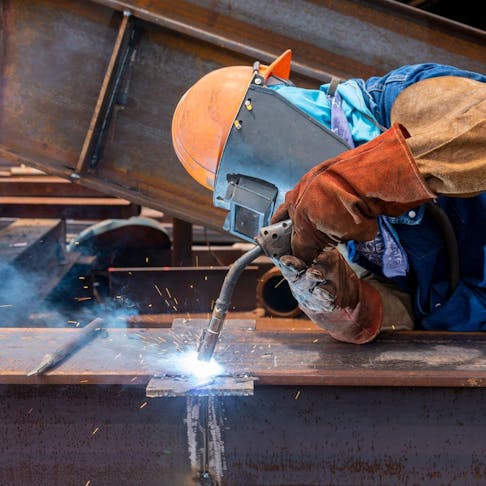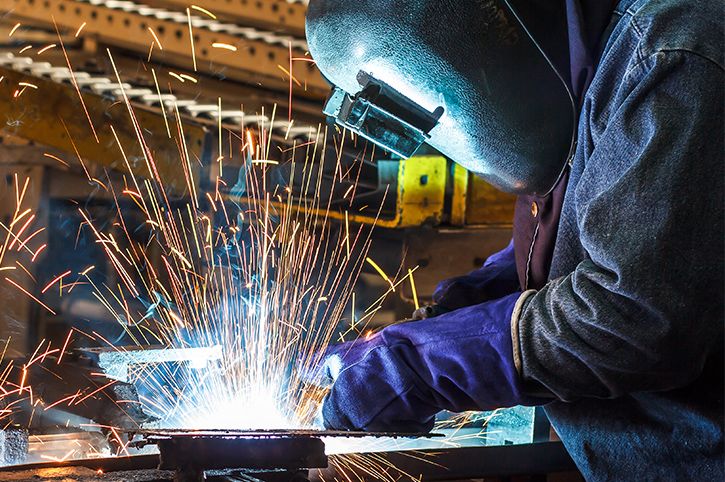How to achieve perfect fusion with Montana Mobile Welding and Repair Belgrade Fabrication
Typical Welding Repair Issues and Just How to Address Them Properly
Welding repair work commonly come across an array of problems that can threaten the stability of the last item. Common problems consist of insufficient penetration, porosity, and misalignment, amongst others. Each issue presents unique challenges that need details techniques for resolution. Understanding these problems is essential for welders intending to boost their abilities and results. This discussion will check out these usual welding repair problems and efficient techniques to resolve them.
Poor Infiltration
Insufficient infiltration occurs when the weld metal stops working to fully fuse with the base product, resulting in weak joints and possible architectural failings. This problem frequently originates from not enough warm input, wrong electrode angle, or improper welding speed. Welders may come across inadequate infiltration because of a miscalculation of the required specifications for a certain material density or kind. Furthermore, contamination on the base product's surface area can prevent efficient bonding, exacerbating the problem. To address poor penetration, welders ought to assure proper setups on their devices and preserve a clean work surface area. Regular evaluation of welds is recommended to determine any type of deficiencies early, allowing for timely modifications and the prevention of jeopardized architectural integrity in welded assemblies.
Porosity
Porosity is a typical defect in welded joints that shows up as little gas bubbles caught within the weld steel. This problem can compromise the honesty of the weld, causing decreased stamina and prospective failure under anxiety. Montana Mobile Welding and Repair Belgrade Fabrication. Porosity generally develops from contamination, dampness, or incorrect welding methods, which allow gases to run away right into the liquified weld pool. To attend to porosity, welders should assure appropriate surface area preparation, keep a tidy working setting, and utilize appropriate welding criteria. Furthermore, selecting the right filler product and protecting gas can reduce gas entrapment. Normal examination and screening of welds can aid determine porosity early, guaranteeing prompt restorative actions are taken, consequently protecting the high quality and integrity of the welded framework
Misalignment
Misalignment in welding can arise from numerous factors, including incorrect configuration and thermal growth. Understanding the origin is vital for efficient resolution. Several modification techniques are readily available to straighten parts and assure architectural integrity.
Root causes of Imbalance
Welding misalignment typically stems from a selection of underlying problems that can jeopardize architectural honesty. One main reason is inappropriate fit-up of components prior to welding, which can bring about gaps and unequal surfaces. Variants in thermal development during the welding process can likewise lead to distortion, particularly if the products being signed up with have different coefficients of growth. Additionally, inadequate clamping and fixturing may fall short to hold elements firmly in position, causing motion throughout welding. Inadequately conserved tools, consisting of welding equipments and tools, might present inconsistencies in the weld bead, more contributing to misalignment. Operator error, stemming from not enough training or experience, can also play a considerable duty in producing misaligned welds.

Improvement Strategies Available
Dealing with misalignment successfully requires a mix of corrective techniques customized to the specific concerns handy. One usual technique is making use of fixtures or jigs to hold elements in the proper placement throughout welding, making certain regular placement. Furthermore, preheating the materials can help in reducing distortion and enhance fit-up. For substantial imbalance, mechanical realignment strategies, such as utilizing hydraulic jacks or clamps, can be used to correct the setting prior to welding. Post-weld warm treatment may additionally be required to relieve stresses triggered by imbalance. Finally, careful evaluation and modification throughout the configuration stage can avoid imbalance problems from becoming substantial issues, promoting a smoother welding process and enhancing total structural honesty.
Distortion
Distortion is an usual challenge in welding that can occur from various variables, consisting of irregular cooling and heating. Understanding the root causes of distortion is essential for applying efficient avoidance techniques. Resolving this issue not just improves structural honesty yet likewise boosts the total top quality of the weld.
Reasons for Distortion
When subjected to the intense warm of welding, materials typically undergo adjustments that can cause distortion. This phenomenon primarily arises from thermal expansion and tightening during the welding procedure. As the weld location warms up, the product increases; upon air conditioning, it contracts, which can produce interior anxieties. In addition, unequal home heating throughout a work surface can aggravate these anxieties, resulting in warping or flexing. The sort of material also plays a considerable function; steels with differing thermal conductivity and coefficients of development might respond in a different way, bring about unforeseeable distortions. Inadequate joint design and inadequate fixturing can contribute to misalignment during welding, boosting the probability of distortion. Understanding these reasons is crucial for efficient welding repair service and prevention techniques.
Prevention Techniques
Effective prevention techniques for distortion during welding concentrate on controlling heat input and guaranteeing proper joint layout. Preserving a consistent warmth input helps to reduce thermal development and contraction, which can result in distortion. Using strategies such as pre-heating the workpiece can also lower the temperature slope, promoting consistent home heating. In addition, choosing ideal joint layouts, such as T-joints or lap joints, can improve security and reduce tension focus. Applying appropriate fixturing to secure the workpieces in location better help in maintaining placement during the welding procedure. Lastly, staggered welding series can disperse warmth more uniformly, stopping local distortion. By using these approaches, welders can greatly decrease the chance of find distortion and boost the total quality of their welds.
Splitting
Breaking is a typical problem run into in welding fixings, usually arising from various variables such as incorrect air conditioning rates, material choice, or insufficient joint prep work. The occurrence of fractures can considerably jeopardize the honesty of the weld, causing potential failings throughout procedure. To address this problem, welders have to initially evaluate the origin, making certain that materials are suitable and properly chosen for the details application. In addition, regulating the cooling rate during the welding process is essential; rapid cooling can cause tension and cause cracking. Appropriate joint layout and preparation also add to lessening the risk. Executing these approaches can boost weld high quality and longevity, ultimately decreasing the probability of fracturing in ended up weldments.

Incomplete Combination
A significant concern in welding repairs is insufficient blend, which occurs when the weld metal does not appropriately bond with the base material or previous weld passes - Montana Mobile Welding and Repair Belgrade Welding. This issue can bring about weaknesses in the joint, potentially compromising the stability of the bonded structure. Aspects adding to insufficient fusion consist of insufficient heat input, improper welding strategy, and contamination of the surfaces being joined. To resolve this issue effectively, welders need to guarantee appropriate pre-weld cleaning and surface prep work, as well as adjust their welding parameters to attain sufficient penetration and blend. Regular assessment during the welding process can also aid determine incomplete fusion early, enabling for timely restorative procedures to improve the general high quality of the weld
Overheating
While welding repair work can improve architectural integrity, overheating provides a significant obstacle that can lead to material deterioration. Too much warm throughout welding can alter the mechanical properties of steels, resulting in lowered toughness, boosted brittleness, and bending. This phenomenon is especially important in high-stress applications where structural reliability is paramount. Recognizing overheating can include visual evaluations for discoloration or distortion, along with monitoring temperature throughout the welding procedure. To alleviate the threats connected with getting too hot, welders must utilize suitable strategies, such as managing heat input, adjusting travel rate, and using appropriate filler click resources products. In addition, implementing pre- and post-weld heat therapies can help restore product residential properties and improve the overall high quality of the repair service, making certain lasting efficiency and security.
Often Asked Concerns
What Are the Typical Indicators of a Welding Issue?

How Can I Examine My Welds for High quality?
To examine welds for high quality, one can make use of aesthetic evaluations, ultrasonic testing, and radiographic methods. Each method ensures architectural honesty, recognizes problems, and verifies adherence to defined criteria, eventually improving the dependability of the bonded joints.
What Safety and security Safety Measures Should I Take While Welding?
When welding, one need to focus on safety by wearing proper personal protective devices, making sure appropriate ventilation, safeguarding flammable materials away, keeping a clean work space, and knowing environments to stop injuries and crashes.
Can I Fix a Weld Without Redoing the Entire Joint?
Fixing a weld without remodeling the whole joint is feasible, depending on the damages (Montana Mobile Welding and Repair Belgrade Fabrication). Strategies such as grinding, adding filler material, or using a welding procedure can effectively resolve certain problems while maintaining the surrounding structure
What Equipment Are Vital for Effective Welding Repair Works?
Important devices for efficient welding repair services consist of a welding machine, cord brush, grinder, protective gear, clamps, and filler products. Each tool plays an important role in ensuring quality and safety during the fixing process. Porosity generally emerges from contamination, wetness, or inappropriate welding techniques, which permit gases to leave right into the molten weld swimming pool. Badly maintained tools, consisting of welding machines and devices, may introduce incongruities in the weld grain, additional contributing to imbalance. When subjected to the extreme warm of welding, products commonly undergo modifications that can lead to distortion. Cracking is a common concern experienced in welding fixings, typically resulting from various aspects pop over to these guys such as inappropriate cooling prices, product selection, or inadequate joint preparation. A significant issue in welding repair work is insufficient blend, which occurs when the weld metal does not sufficiently bond with the base product or previous weld passes.